We were driving around looking for a different access route to the marsh with the heron nest. We were on a residential street in Wellesley when we spotted this coyote. It immediately turned to leave, but when Lucy started barking at it from inside the car, it came back to investigate us.
It looked quite fine and healthy as far as I could tell. Rather thrilling to get such a good look. Coyotes weigh 20 to 50 lbs. and can live up to 14 years in the wild. Their litters are three to twelve pups, born in the spring. Both parents protect their pups and their territory. By fall, the young can hunt on their own. There is an area of Ridge Hill I call Coyoteville. I wonder if this one has a den in that area.

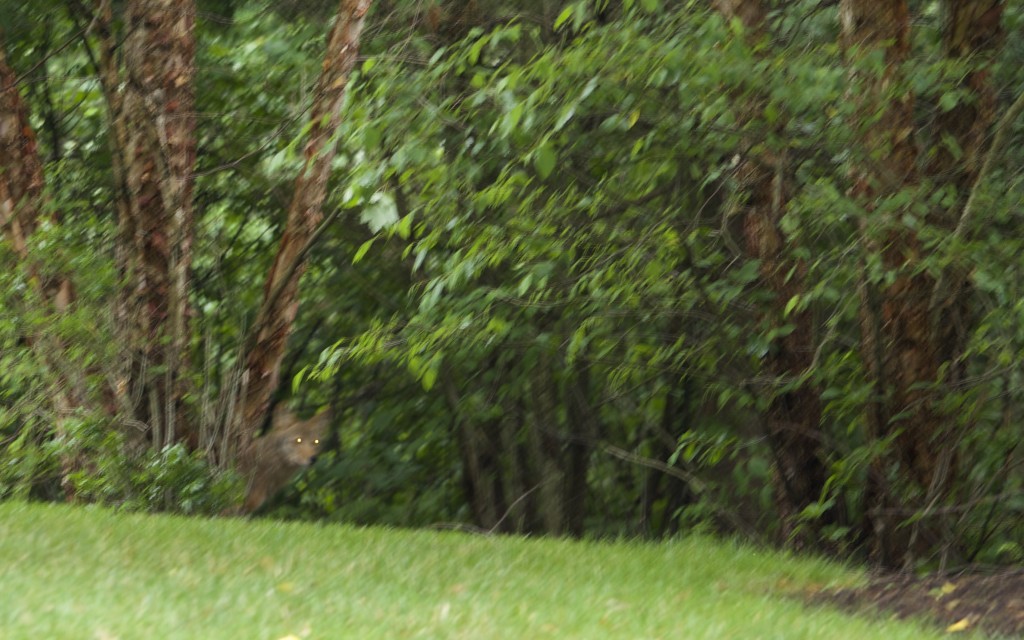
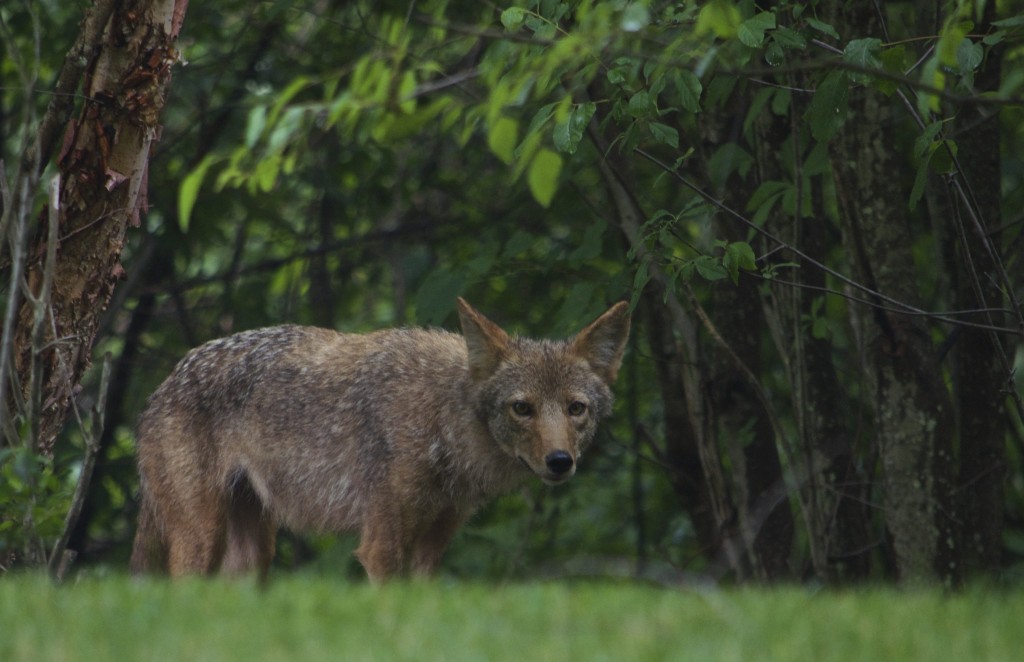
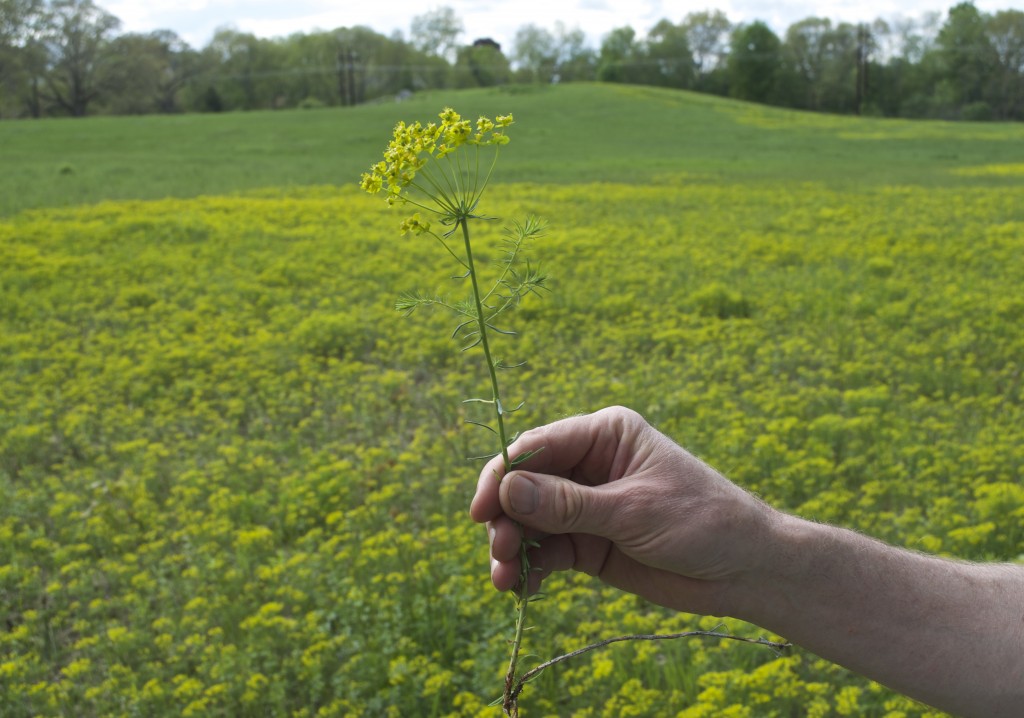
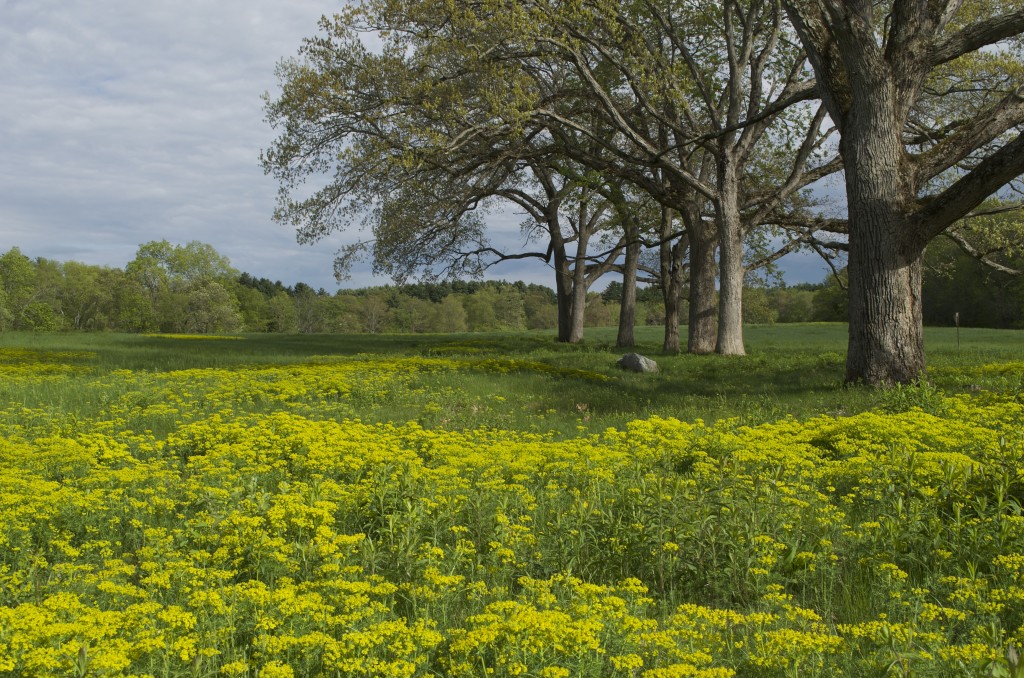
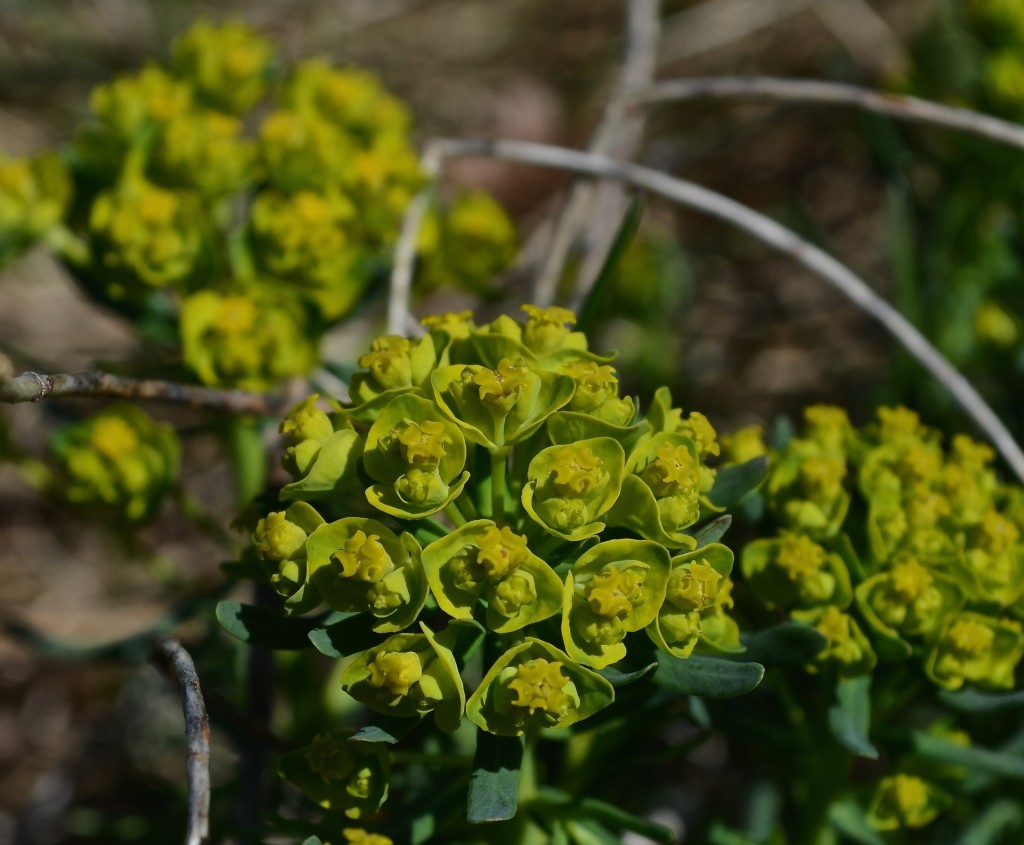 A hardy groundcover — tolerates poor soil, dry conditions, deer, rabbits, pollution… Has a milky, poisonous sap that repels herbivores. Forms a dense fluffy blanket about a foot tall. Tiny flowers that start lime-green and yellow, and age to red. Has narrow-leaved foliage reminiscent of cypress trees, hence the name cypress spurge. (The common name “spurge” comes from the Middle English/Old French word “epurge”, meaning “to purge”, because these plants were used as purgatives. (Poinsettias are spurges!) Native to Europe, introduced to North America in the 1860s as an ornamental, and is now a harmful invasive that has really colonized Charles River Peninsula.
A hardy groundcover — tolerates poor soil, dry conditions, deer, rabbits, pollution… Has a milky, poisonous sap that repels herbivores. Forms a dense fluffy blanket about a foot tall. Tiny flowers that start lime-green and yellow, and age to red. Has narrow-leaved foliage reminiscent of cypress trees, hence the name cypress spurge. (The common name “spurge” comes from the Middle English/Old French word “epurge”, meaning “to purge”, because these plants were used as purgatives. (Poinsettias are spurges!) Native to Europe, introduced to North America in the 1860s as an ornamental, and is now a harmful invasive that has really colonized Charles River Peninsula.